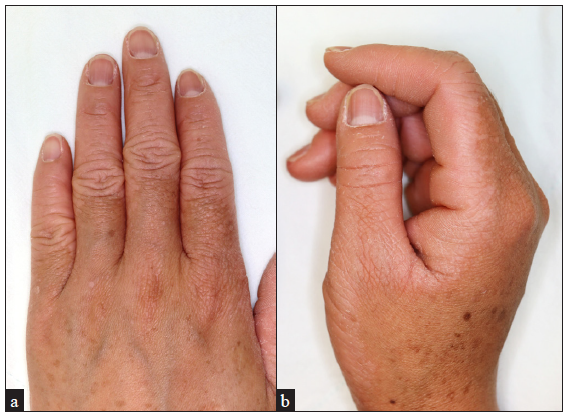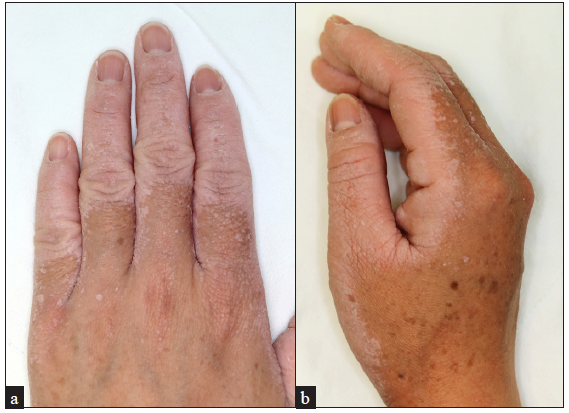A 38-year-old woman presented with a history of asymptomatic erythema and thickening of palms and soles since she was six years old. The condition has been stable without any progression. There was no family history of similar lesions. A skin examination showed diffuse, well-demarcated, erythematous palmoplantar hyperkeratosis with transgradient erythema extending to dorsal surfaces of hands [Figures 1a and 1b], feet and inner wrists. A whitish spongy appearance of lesional skin was noted after a ten-minute water exposure [Figure 2a and 2b]. Dermoscopy revealed the spongiotic and edematous dermatoglyphics after water immersion. Genetic testing showed a nonsense mutation in the SERPINB7 gene. The diagnosis of palmoplantar keratoderma, Nagashima type, was made. Differential diagnoses considered included aquagenic syringeal acrokeratoderma, which is a dermatosis limited to the palms and can also present with whitish papules and wrinkles on the palms after water exposure.

Export to PPT

Export to PPT
留言 (0)